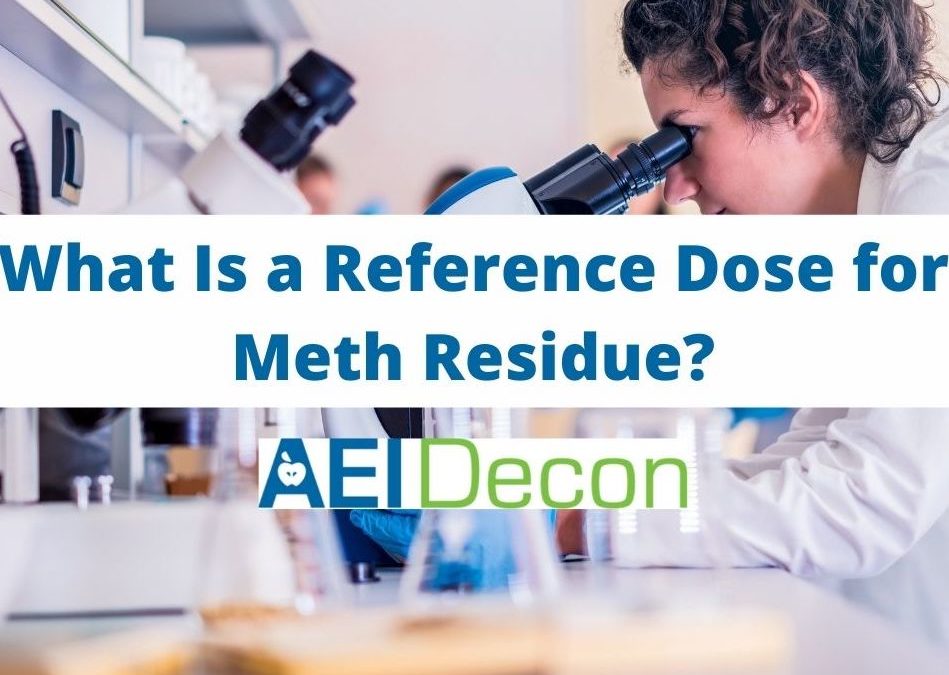A reference dose is a scientific term. Simply put, it is the highest amount of a toxin you can ingest or absorb without causing any negative effects on your health. Generally speaking, we depend on reference doses when monitoring pollutants, phenomena like radiation, and substances. Of course, that includes reference dose for meth residue as well.
Now, this is a pretty exciting topic for us decontamination specialists. However, we understand. Not everyone can grow up dreaming of the glamorous life of meth removal. (Don’t worry, we’re not here to judge your career decisions.)
But, even if you don’t find it terribly interesting, it’s still an important concept. It’s also one that comes up pretty consistently with our customers. And that’s understandable. When your home is condemned because of meth, it’s only natural that people start asking certain questions.
So, let’s dive into this headfirst. What were Utah lawmakers thinking when they set our state’s decontamination standard? And why should we care about reference doses?
Who Is at the Most Risk From Exposure to Meth Residue?
– Reference Doses Explained –
Despite all available data to the contrary, many people still believe there is no risk involved in living in a meth house. Rest assured, this is not at all true. Meth residue can absolutely make you ill, as well as your family and any future occupants of a property. That’s where reference doses can provide some guidance.
You see, it was up to lawmakers to determine how to best keep Utah citizens safe from residual meth. They also had to balance financial burdens to homeowners. So, originally, the legislation on meth removal was set to a strictly nondetectable limit. That was logical, at the time. No meth was the best way to protect against potential toxicity.
However, our legislators changed this limit based on research by Madden et al. His work, you might have guessed, focused on reference doses for meth.
Now, in general, most scientists consider pets, infants, and people with compromised immune systems to be at the most risk for complications related to meth residue. In part, this is because of the higher rates of contact with porous surfaces. (It’s also due to the increased hand-to-mouth activities of pets and infants. You can read more about that here.)
So, Madden found that the lowest observable adverse effects of meth take place at doses of 0.75 mg of methamphetamine per kilogram of body weight (0.75 mg/kg). That works out to 0.00024 mg/kg-day for human infants. Since children and adults have even lower dose levels, that was determined to be the best model without putting undue burdens on the public. As such, Utah State’s decontamination limit rose to 1.0 µg/100cm². That’s just below the daily reference dose for infants.
What If There is Meth in My Home Above The Reference Dose for Meth?
So there you have it. Reference doses for meth residue help lawmakers define safety and contamination in the State of Utah. Though, if you’re still not sure what it all means, just remember that meth is dangerous. And if you find it in your home, be sure to follow the proper steps. That includes professional testing and effective decontamination. This is especially true if you find meth above the known reference dose. (Of course, in Utah, that is actually required by state law.)
We’d also like to point out, before we go, that while meth residue might be slightly more dangerous for vulnerable populations, anyone can have an adverse reaction. That is, in part, why the CDC and the EPA have such specific guidelines for detailing appropriate decontamination. That is also why it is so important to test a house for meth any time you buy, sell, or renovate a home. It’s often a good idea when renting too.
For any additional questions about meth testing or removal, contact a Certified Decontamination Specialist in your area. If you’re in Utah, feel free to call AEI Decon for a free consultation. We’re happy to help. (801) 888-6698

